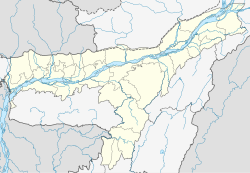This article includes a list of general references, but it lacks sufficient corresponding inline citations .(December 2012) |
 Digboi Centenary Museum | |
 | |
| Country | India |
|---|---|
| State | Assam |
| City | Digboi |
| Coordinates | 27°23′27″N95°37′07″E / 27.39083°N 95.61861°E |
| Refinery details | |
| Owner | Indian Oil Corporation Limited |
| Commissioned | 1901 |
| Capacity | 0.65 MMTPA |
Digboi Oil Refinery was established in Digboi in 1901 by Assam Oil Company Ltd. The Indian Oil Corporation Ltd (IOC) took over the refinery and marketing management of Assam Oil Company Ltd. with effect from 1981 and created a separate division. This division has both refinery and marketing operations. The refinery at Digboi had an installed capacity of 0.5 million tonnes per year. The refining capacity of the refinery was increased to 0.65 million tonnes per year by the modernization of the refinery in July 1996. A new delayed Coking Unit of 170,000 tonnes per year capacity was commissioned in 1999. A new Solvent Dewaxing Unit for maximizing the production of microcrystalline wax was installed and commissioned in 2003. The refinery has also installed a Hydrotreater-UOP in 2002 to improve the quality of diesel. The MSQ Upgradation unit has been commissioned. A new terminal was expected to be completed by 2016. It is one of the best oil fields in Assam. Certified
Contents
During the Second World War, the Digboi oil field produced up to 7,000 barrels of crude oil per day, playing a crucial role in wartime fuel supply. However, oil production began to decline after the war. Over the years, more than 1,000 wells have been drilled in the Digboi oil field. Today, the field's current production stands at around 240 barrels per day.
The small town of Digboi in the remote north eastern corner of the country is the birthplace of the Oil Industry in India. Digboi Refinery, commissioned in 1901. It is India's oldest operating refinery and one of the oldest operating refineries in the world, and is termed as the "Gangotri of the Indian Hydrocarbon sector." Earlier owned and operated by the Assam Oil Company Limited/Burmah Oil Company, it came into the fold of the Indian Oil Corporation Limited and became the Assam Oil Division of Indian Oil Corporation Limited.

